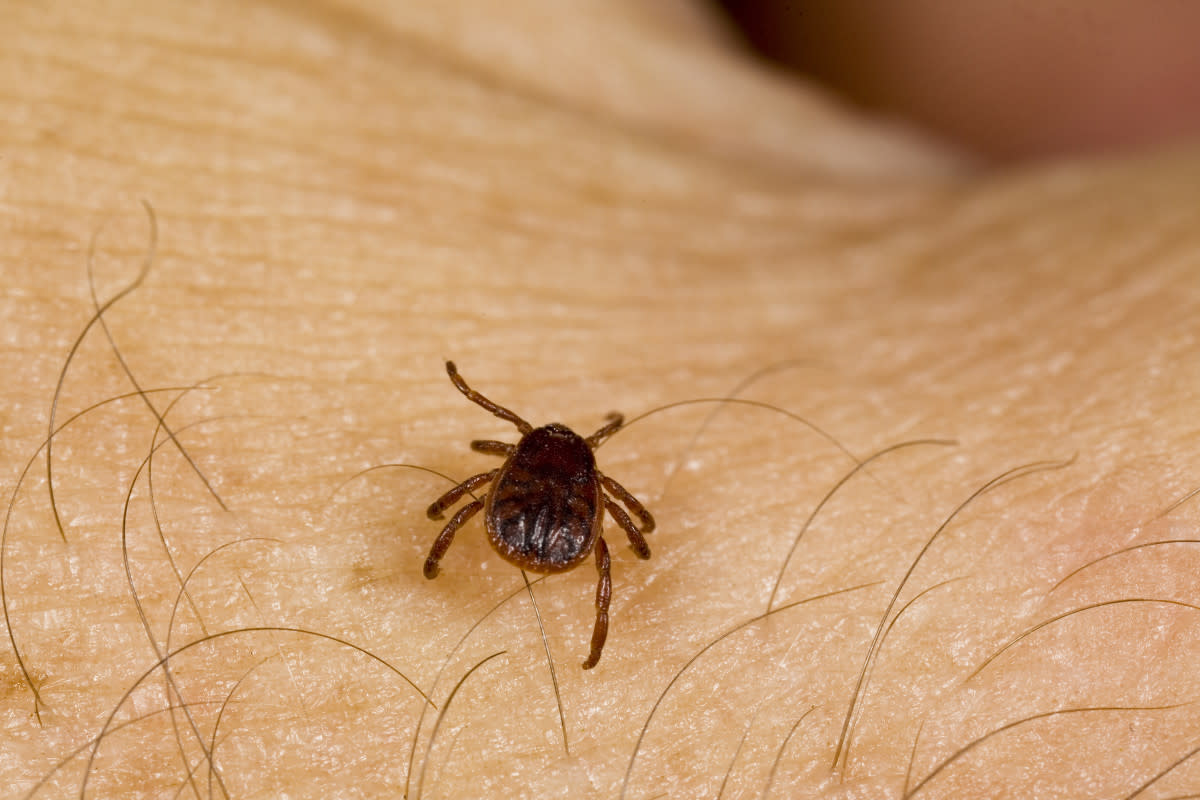Human Sweat May Prevent Lyme Disease, According to a New Study

Spending time outdoors sometimes comes with the risk of being bitten by a tick carrying Lyme disease, which can lead to chronic illness if left untreated. Luckily, scientists have seemingly found a prevention method that anyone can take part in.
A new study published in the Nature Communications journal shows some promising signs in the fight against Lyme disease. Researchers at MIT and the University of Helsinki found that human sweat contains a protein—specifically, a secretoglobin called SCGB1D2—that suppresses the growth of a bacterium that causes Lyme disease. According to their findings, one-third of the human population carries a genetic variant of this protein.
"This protein may provide some protection from Lyme disease, and we think there are real implications here for a preventative and possibly a therapeutic based on this protein," study senior author Michal Caspi Tal said in a statement.
To reach this conclusion, the researchers analyzed the DNA and medical histories of 7,000 Finnish people who've been diagnosed with Lyme disease. Using mice, they exposed normal and mutated versions of the SCGB1D2 protein to borrelia burgorferi, the bacterium that most commonly causes Lyme disease. They found that the normal version "significantly" inhibited the growth of the bacteria, while twice as much of the mutated version was needed to achieve similar results. The mice exposed to the mutated protein became infected with Lyme disease, while those with the normal version remained healthy.
"In the paper we show they stayed healthy until day 10, but we followed the mice for over a month, and they never got infected,” Tal explained. "This wasn’t a delay, this was a full stop. That was really exciting."
Related: Bodies in Motion: An Athlete’s Journey Through Lyme Disease
The study didn't exactly determine how SCGB1D2 inhibits bacterial growth or why the mutated variant of the protein isn't as effective in fighting borrelia burgorferi. The scientists now are looking into incorporating the protein in skin creams to help prevent Lyme disease and to treat infections resistant to antibiotics.
"We have fantastic antibiotics that work for 90 percent of people, but in the 40 years we’ve known about Lyme disease, we have not budged that,” Tal said. "10 percent of people don’t recover after having antibiotics, and there’s no treatment for them."
It's good news for now, but you might still want to wear long sleeves and pants when hiking through thickets.

